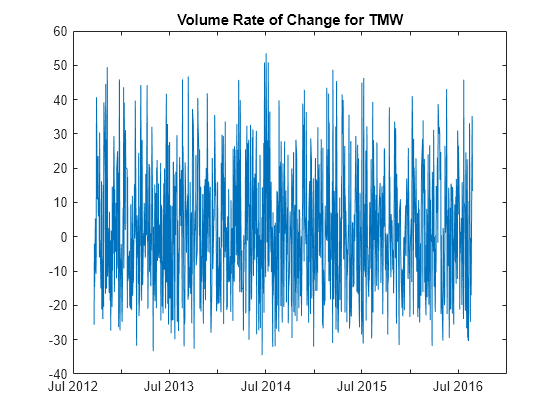volroc
成交量变化率
说明
volumeChangeRate = volroc(Data)
volumeChangeRate = volroc(___,Name,Value)
示例
输入参数
名称-值参数
输出参量
详细信息
参考
[1] Achelis, S. B. Technical Analysis from A to Z. Second Edition. McGraw-Hill, 1995, pp. 310–311.
